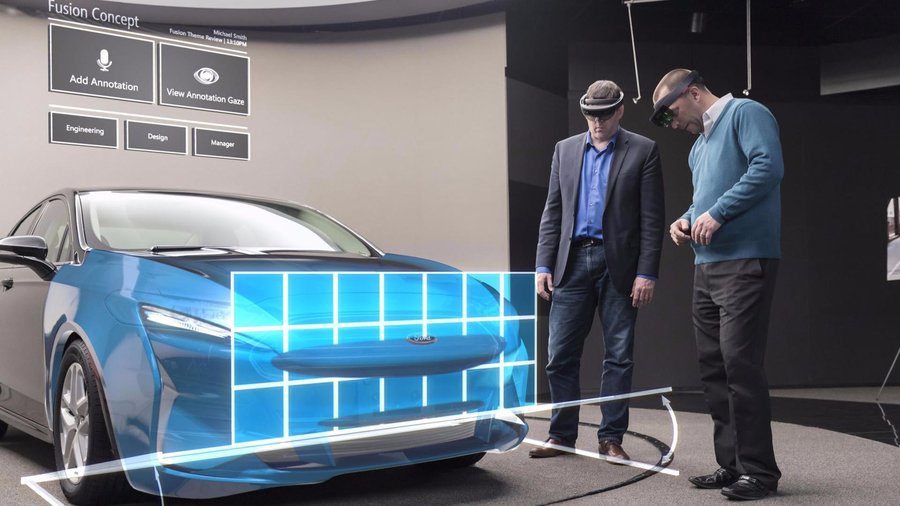Ford Uses Microsoft Holographic VR Tech To Design Cars Quicker

For decades, designing a new car has been a laborious process that few outside the automotive industry fully understand and appreciate. Ford isn't prepared to nix traditional clay modeling, because it's still a great hand-on tool for design. The automaker is speeding up the process, however, by fusing old school techniques and virtual reality with some help from Microsoft. It's called HoloLens, and in short, it allows users to virtually overlay design shapes and elements onto existing clay models or actual cars, so they can be viewed full-size in a real-world environment.
By donning a pair of futuristic goggles, designers and engineers can visualize and experiment with design changes in minutes or even seconds, as opposed to spending days or weeks reshaping clay models. Each HoloLens is wireless and contains its own processor, which tracks the environment and the movements of the wearer to accurately model the holographic overlays from any angle, allowing users to do a virtual vehicle walk-around. How cool is that?
Ford has actually been using the system for the past year at its Dearborn design studios, piloting the technology with Microsoft. Now, the company is taking HoloLens global, and because the system allows for collaboration, it means designers and engineers from anywhere in the world can view a project and make real-time suggestions for others to review.
"We may not be able to teleport yet, but HoloLens allows us to review full-size 3D designs with designers and engineers around the world in real time," said Craig Wetzel, Ford's manager for design technical operations. "And we've only just scratched the surface, so possibilities for the future seem almost limitless. This is very exciting."
It's unlikely that virtual reality will completely replace clay models anytime soon. Clay models still provide a tangible, physical presence for imagining designs that computers simply can't match. The blending of the technologies, however, can potentially cut months or even years off concept-to-production schedules. It's definitely a very cool time to be a designer in the auto business.
Related News
